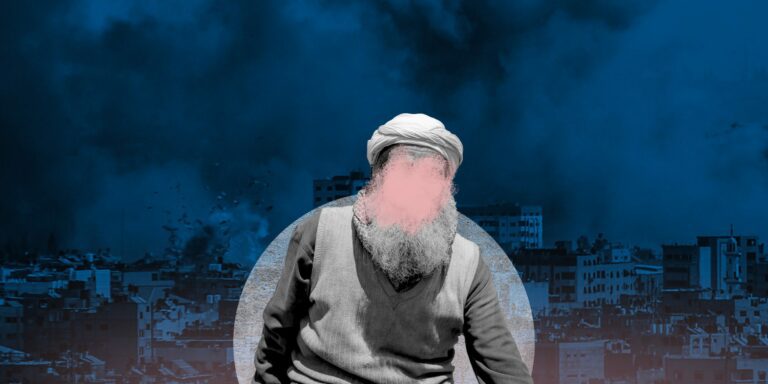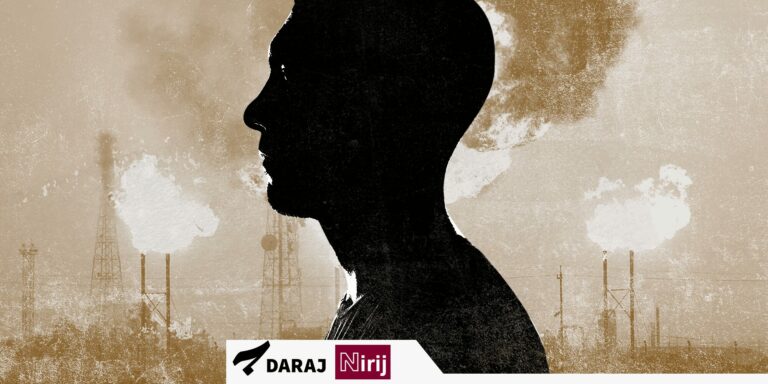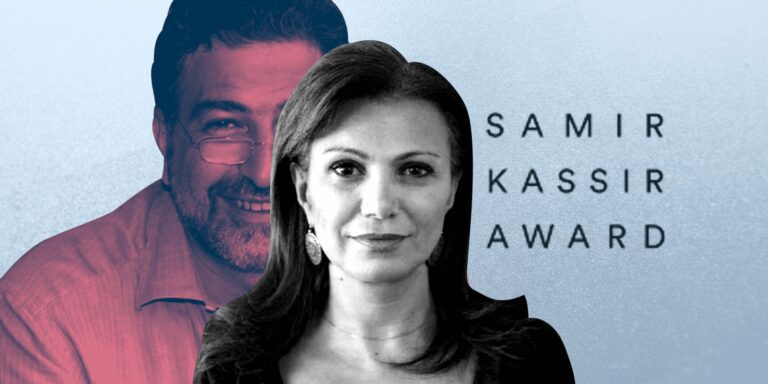Following 18 hours of difficult and complex search operations, Iranian media officially announced that President Ebrahim Raisi and his accompanying delegation were all killed.
The helicopter carrying Raisi and a delegation of eight people, including Foreign Minister Hossein Amir-Abdollahian, crashed while heading from the border point with the Republic of Azerbaijan towards Tehran.
Raisi and the accompanying delegation, alongside Azerbaijani President Ilham Aliyev, had participated in the inauguration ceremony of the Qiz Qalasi and Khoda Afarin dams on the border Aras River, which divides Azerbaijan into East and West.
According to Iranian Interior Minister Ahmad Vahidi, “The president and the accompanying delegation were returning on three helicopters after the inauguration of the dam. The helicopter carrying the president was forced to perform what is technically known as a hard landing due to bad weather conditions, crashed violently to the ground, and burned completely. Everyone on board perished.”
After news of the incident spread, rescue teams immediately headed to the area, but due to dense fog and heavy rain, reaching the site was difficult and took a long time, similarly with the aerial rescue operations.
Among the passengers on the helicopter were the Friday Imam of Tabriz, Ayatollah Mohammad Ali Ale-Hashem, the governor of Azerbaijan Province, Hossein Malek Rahmati, the helicopter pilot and his assistant, and the president’s aides. The other two helicopters carried the ministers of energy, transportation, urban development, and oil, and they arrived in the capital unharmed.
Around 6 am on Monday, rescue teams announced that they were a few hundred meters away from the helicopter wreckage, and the images taken by drone aircraft did not show any signs of anyone on board being alive. By around 8 am, they announced that they had reached the crash site.
The Iranian rescue teams, affiliated with the Red Crescent, the army, the Revolutionary Guards, and the Basij, had technically failed to locate the helicopter crash site due to a lack of necessary equipment. Regional countries, including Turkey and Russia, quickly sent rescue personnel, advanced detection devices, and drones. A Turkish “Akıncı” drone managed to locate the accident site.
Reports indicate that the helicopter crashed specifically in the Dizmar Forest, which covers a vast geographical area between the cities of Varzeqan and Jolfa in East Azerbaijan Province, about 100 kilometers north of Tabriz. It is a rugged mountainous area with an average altitude of 2,000 meters, consisting of several mountain ranges shared between Iran and the Republic of Azerbaijan, bearing Turkish Azerbaijani names such as Karadag, Agh Dag, Jelah Dag, and Pirsqa. This area is characterized by cold and freezing winters and mild summers, experiencing rain and fog most days of the year.
The weather is the primary suspect!
So far, Tehran still considers the weather as the first and only suspect in the incident, despite some voices suggesting an act of terrorism planned by hostile countries and executed by local entities, with Israel at the top of the list of accusations, using the territories of the Republic of Azerbaijan.
It is possible that the Azerbaijani opposition in Iran is also a suspect in the incident. There is a faction within the Iranian opposition that accuses the Supreme Leader, Ali Khamenei, of eliminating Raisi to clear the way for his son Mojtaba to take over the leadership, as Raisi was the only obstacle to that.
After the news of Raisi and his companions’ deaths spread, the Iranian government held an emergency meeting during which Raisi’s seat was empty with a black sash around it. After the meeting, the government announced a general state of mourning and appointed First Vice President Mohammad Mokhber Dezfuli (with the Supreme Leader’s approval) to manage the interim period until a new president is elected, as stipulated by the Iranian constitution.
Ebrahim Raisi or “the Ayatollah of Execution”
Raisi is the 8th President of the Islamic Republic, having won the presidential election in the summer of 2021 with the lowest number of votes in the Republic’s history, after failing in a previous round against former President Hassan Rouhani. He is the second president to be killed after Mohammad Ali Rajai, who was assassinated by the “Mujahideen-e-Khalq” during a meeting at the Supreme Defense Council on August 30, 1981.
Raisi is 63 years old, born in the city of Mashhad in Khorasan Razavi Province, which was named after Imam Ali Reza, the 8th Imam of the Twelver Shia, who lived and was buried in Mashhad, a city that hosts more religious schools than any other Shia city.
After completing his primary education, he began his religious studies in Mashhad, then moved to the Haqqani religious school in Qom, a school whose many students later held security and judicial positions in the Islamic Republic. At the age of twenty, he was appointed as the prosecutor of Karaj, near Tehran, which allowed him to marry the daughter of Mashhad’s Friday prayer leader, Ahmad Alamolhoda, whose harsh and controversial statements and stances, especially those related to women and freedoms, frequently make headlines in Iranian newspapers every Friday.
The Iranian opposition calls Raisi the “Ayatollah of Execution” because of his involvement in the execution of thousands of prisoners in the summer of 1988. He was indeed one of the members of the so-called “Death Committee,” which sentenced thousands of political opponents to execution. It was said that the gallows were so overused that the committee had to resort to execution by firing squad.
In the years before his presidency, Raisi was one of the most important figures in the Iranian judicial network, holding various positions such as the prosecutor of Karaj, then Tehran, the country’s Attorney General, First Deputy Chief Justice, and eventually Chief Justice.
Parallel to his judicial career, he entered political life after being appointed by Khamenei as the head of the Astan Quds Razavi, one of the richest Shia religious institutions in the world. However, he remained until the last moment of his life a non-charismatic political figure without significant influence.
Raisi had a close relationship with the leaders of the Revolutionary Guard Corps (IRGC), and the organization’s media regularly covered his activities even before he became president. The Iranian opposition suggests that his relationship with IRGC leaders like Qassem Soleimani and Mohammad Ali Jafari helped him ascend to the presidency. After being appointed as the head of the Astan Quds Razavi, he became one of the prominent figures of corruption in the country.
After failing to win the presidential elections against Rouhani, Raisi began preparing for a second attempt, becoming more rigid and gathering hardliners around him. This led to the emergence of a hardline fundamentalist faction within the conservative wing. Speculations started that he was the frontrunner to succeed Khamenei, and he then won the competition against Sadeq Larijani for the position of Vice President of the Assembly of Experts, actively visited provinces to get closer to the public, and launched plans to combat corruption and revive the economy. He announced that he would reopen closed and bankrupt factories.
And after a year of these activities and trips, he ran for the presidential elections. Figures within the IRGC, including the former commander of the Khatam al-Anbiya Headquarters, Saeed Mohammad, prepared him for the elections. Saeed Jalili, the former head of the National Security Council, helped him prepare for the debates. His team, with the help of the Guardian Council, worked to eliminate figures threatening his victory, such as Ali Larijani, Mahmoud Ahmadinejad, Massoud Pezeshkian, and Eshaq Jahangiri, allowing him to enter the elections in the safest possible conditions.
This multi-stage and multi-faceted support took more than five years and marked the end of the first phase of the project to elevate him in Iranian politics. During this phase, opponents called him the “Ayatollah of Execution,” while media affiliated with the IRGC and hardliners called him the “Sayyed of the Disadvantaged.”
After winning the presidential election, Amnesty International, which conducted an extensive investigation into his role in the 1988 executions, demanded his criminal trial on charges of committing crimes against humanity and violating human rights.
Raisi as the Suppressor of Protests
Raisi played a major role in suppressing the 2009 Green Movement protests and subsequent protests, exercising stringent censorship over the press, the internet, and Iranian women’s dress beyond the “proper hijab.”
The Iranian women’s movement calls him the “number one enemy of women” because of his role in suppressing the “Woman, Life, Freedom” movement that erupted after the killing of the Kurdish young woman, (Jina) Mahsa Amini, by the morality police in Tehran. He also issued strict decisions affecting Iranian women and further restricted their already narrow scope of freedom.
He was one of the most enthusiastic proponents of the Hijab and Chastity Bill, which imposed specific regulations on the legal dress of Iranian women, and is said to have drafted the majority of its articles. He was keen to complete it in the shortest time and submit it to the Shura Council for ratification. He was also at the forefront of those calling for the activation of the morality police and supporting their return to the streets with a new repressive look and an iron fist.
Who Will Succeed Raisi?
According to Article 131 of the Constitution of the Islamic Republic of Iran, “In case of the death, dismissal, resignation, absence, or illness of the President for more than two months, or in the event that his term ends and a new President cannot be elected, the First Vice President shall assume the President’s powers and responsibilities with the approval of the leadership.”
The Constitution also mandates that “a council consisting of the Speaker of the Parliament, the Chief Justice, and the First Vice President must make the necessary arrangements for the election of a new President within a maximum period of fifty days.”
Currently, Mohammad Mokhber Dezfouli holds the position of First Vice President of Iran. If Ali Khamenei approves, he will assume the late President’s powers and responsibilities until a new President is elected.
Mokhber, born in Dezful in the Khuzestan Province in southwestern Iran, is on the list of U.S. sanctions. He is one of Raisi’s most important aides, especially in the economic field, due to Raisi’s lack of expertise in this area.
Journalists believe that Mokhber is effectively managing Raisi’s government and plays a direct role in appointing the ministers of economy, oil, and energy (ministries of national wealth). He is also a member of the Expediency Discernment Council, and his name, along with his son Sajjad, has been mentioned in corruption cases related to the sale of Iranian oil.






